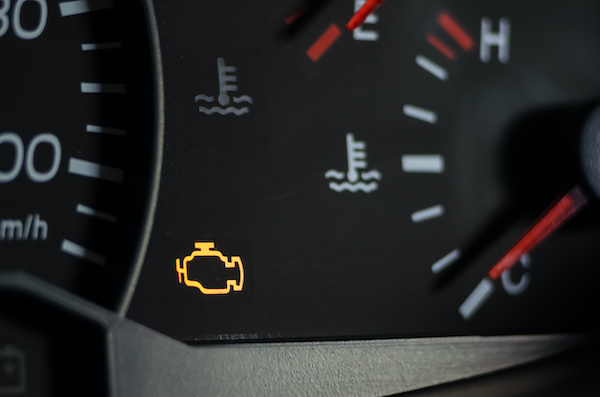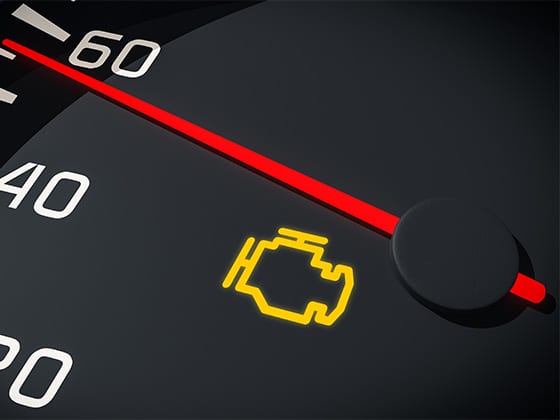The blinking check engine light indicates a potential problem with your vehicle’s engine. This blog post will explore common causes of a blinking check engine light and provide tips for addressing the issue.
The check engine light is a crucial component of your vehicle’s onboard diagnostics system. When it blinks, it’s a clear indication that something is amiss with your engine. Ignoring this warning can lead to more significant and expensive issues down the line.
Understanding the reasons behind a blinking check engine light is essential in determining the severity of the problem. It could range from a loose gas cap to a malfunctioning oxygen sensor or even a more serious engine issue. In any case, taking prompt action and addressing the underlying cause is vital to avoid further damage.
In this blog post, we will delve into the common causes of a blinking check engine light and provide practical tips to help you diagnose and resolve the issue. By understanding what triggers this warning, you can take appropriate measures to ensure the longevity and performance of your vehicle.

Credit: www.theautodoc.net
Contents
What is a Check Engine Light?
The check engine light, part of your car’s onboard diagnostics system, monitors various aspects of your vehicle’s performance, primarily focusing on the engine and emissions system. When the light illuminates, it signals that the vehicle’s computer has detected an issue. This light can either remain steady or blink, each indicating different levels of severity.
Steady vs. Blinking Check Engine Light
A steady check engine light typically indicates a minor issue, such as a loose gas cap or a sensor malfunction. While it suggests that you should get your car checked soon, it doesn’t require immediate attention.
A blinking check engine light, however, signifies a severe problem, often related to engine misfire. Ignoring it can lead to significant damage to your vehicle, such as catalytic converter failure or severe engine damage.
Common Causes of a Blinking Check Engine Light
Here are common causes of check engine light blinking –
- Engine Misfire: The primary cause of a blinking check engine light is an engine misfire. Misfires occur when one or more cylinders fail to combust the air-fuel mixture properly. Causes include:
- Faulty Spark Plugs or Wires: Worn or damaged spark plugs and wires can prevent proper ignition.
- Malfunctioning Ignition Coil: The ignition coil generates the high voltage needed for spark plugs to ignite the fuel. A faulty coil can cause misfires.
- Clogged Fuel Injector: Fuel injectors deliver fuel to the engine’s cylinders. If clogged, they can disrupt the air-fuel mixture.
- Low Fuel Pressure: Issues with the fuel pump or fuel filter can reduce fuel pressure, leading to misfires.
- Vacuum Leaks: Leaks in the vacuum system can cause an imbalance in the air-fuel mixture.
- Compression Issues: Problems with engine compression in one or more cylinders can lead to misfires.
- Catalytic Converter Damage: Continuous misfires can allow unburned fuel to enter the catalytic converter, causing it to overheat and potentially fail. This component is crucial for reducing harmful emissions.
- Fuel System Issues: Problems like a failing fuel pump, a clogged fuel filter, or contaminated fuel can disrupt the fuel supply to the engine, causing misfires.
- Air Intake Problems: Issues with the air intake system, such as a faulty mass airflow sensor (MAF) or air intake leaks, can disrupt the air-fuel mixture, leading to misfires.
- Engine Timing Issues: Problems with the engine’s timing, such as a worn timing belt or chain, can cause the cylinders to fire incorrectly, and resulting in misfires and a blinking check engine light.

Consequences of Ignoring a Blinking Check Engine Light
-
Catalytic Converter Damage: Continued driving with a misfiring engine can lead to unburned fuel entering the exhaust system, causing the catalytic converter to overheat and fail. Replacing a catalytic converter is expensive, costing anywhere from $1,000 to $2,500.
-
Engine Damage: Prolonged engine misfires can cause severe internal damage, such as warped valves or damaged pistons, leading to costly repairs or even engine replacement.
-
Reduced Fuel Efficiency: An engine misfire causes inefficient fuel combustion, leading to increased fuel consumption and higher operating costs.
-
Increased Emissions: A malfunctioning engine can produce higher levels of harmful emissions, contributing to environmental pollution and potentially failing emissions tests required for vehicle registration.
What to Do When Your Check Engine Light is Blinking
You should take the following action, when you notice the issue –
- Reduce Speed and Load: If your check engine light starts blinking, immediately reduce your speed and avoid heavy acceleration to minimize further damage.
- Pull Over Safely: If your check engine light starts blinking, find a safe place to pull over as soon as possible. Continuing to drive can cause more damage to your vehicle.
- Check for Obvious Issues: Once you’ve pulled over, check for any obvious issues such as a loose gas cap. Tighten the gas cap and see if the light stops blinking after driving a short distance.
- Read the Diagnostic Trouble Codes (DTCs): Use an OBD-II scanner to read the diagnostic trouble codes stored in your car’s computer. These codes can give you insight into what might be causing the problem. Many auto parts stores offer free diagnostic scanning services.
- Consult a Professional: If you’re unable to determine the issue or if the problem persists, it’s best to consult a professional mechanic. They can diagnose and fix the underlying issue to prevent further damage to your vehicle.
How to Fix Blinking Check Engine Light
Foll0w the steps below to diagnosis and fix the blinking light –
-
Use an OBD-II Scanner: An OBD-II scanner can read diagnostic trouble codes (DTCs) from your vehicle’s computer, providing insight into the cause of the blinking check engine light. These codes can be read with a scanner you purchase or at many auto parts stores and repair shops for free.
-
Inspect and Replace Spark Plugs and Wires: Check the condition of your spark plugs and wires. Replace any that are worn or damaged. Spark plugs and wires should be checked and replaced regularly as part of routine maintenance.
-
Test the Ignition Coils: Use a multimeter to test the ignition coils for proper resistance. Replace any coils that are not functioning correctly.
-
Clean or Replace Fuel Injectors: Fuel injectors can become clogged or damaged over time. Clean the injectors if they are clogged or replace them if they are faulty.
-
Check Fuel System Components:
- Fuel Pump: Test the fuel pump to ensure it is providing adequate pressure. Replace the pump if it is failing.
- Fuel Filter: Replace the fuel filter if it is clogged.
-
Inspect Air Intake System: Check the mass airflow sensor (MAF) and the air intake system for leaks or damage. Clean or replace the MAF sensor if necessary and repair any leaks in the air intake system.
-
Check Engine Timing: Inspect the timing belt or chain for wear and proper alignment. Replace any worn components and adjust the timing as needed.

Credit: www.waynesautocenter.com
Preventative Measures
To prevent the issue you should maintain following task –
-
Regular Maintenance: Follow your vehicle’s maintenance schedule to keep all components in good working condition. Regularly check and replace spark plugs, air filters, and fuel filters.
-
Use Quality Fuel: Use high-quality fuel and consider fuel system cleaners to keep your fuel system clean and functioning properly.
-
Monitor Engine Performance: Pay attention to how your vehicle runs. If you notice any unusual symptoms such as rough idling, reduced power, or decreased fuel efficiency, have your car checked by a mechanic.
-
Keep Sensors in Check: Ensure that sensors related to engine performance are in good condition and replace them if they fail.
Frequently Asked Questions
Here are some FAQs about the blinking check engine light –
Why Is My Check Engine Light Blinking?
A blinking check engine light indicates a serious problem that requires immediate attention from a mechanic.
What Should I Do If My Check Engine Light Blinks?
When the check engine light blinks, pull over safely, and have your vehicle towed to a repair shop for diagnostics.
Can I Still Drive If My Check Engine Light Blinks?
Driving with a blinking check engine light can cause severe damage to the engine. It’s recommended to avoid driving.
What Causes A Check Engine Light To Blink?
A blinking check engine light can be triggered by issues like a misfiring engine, which needs prompt professional diagnosis.
How Much Does It Cost To Fix A Blinking Check Engine Light?
The cost of fixing a blinking check engine light varies based on the underlying issue and required repairs.
Conclusion
A blinking check engine light is not something to be taken lightly. It is a clear indication that there is a problem with your vehicle that needs immediate attention. Ignoring it can lead to further damage and costly repairs down the line.
It is always best to consult with a qualified mechanic who can diagnose the issue and provide the necessary repairs. Remember, taking care of your car’s health ensures a smoother and safer driving experience.